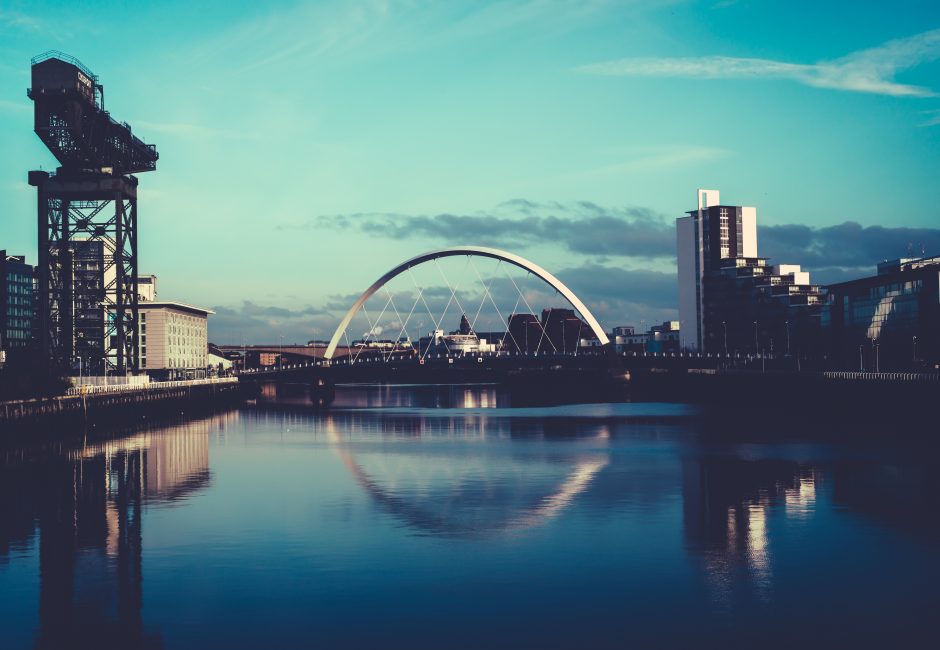Climate KIC and Glasgow City Region join forces, helping the region innovate to become climate resilient

Home to one third of Scotland’s population and provider of 33 per cent of the nation’s jobs, the Glasgow City Region is at risk from climate change. The region along the river Clyde faces many complex and interrelated challenges that need more than superficial, mainstream solutions. The project Clyde Rebuilt aims to understand the web of interrelations that create these urgent problems and identify a variety of innovations that can be explored, combined, applied, and scaled in the region. Clyde Rebuilt is one chapter of Climate KIC “Deep Demonstration Resilient Regions” programme.
The citizens of the Glasgow City Region face the risk of more frequent floods and other dangerous weather events, resulting in damage to homes, roads and railways, and stresses to hospitals and emergency services as global temperatures rise due to climate change. Clyde Rebuilt is a ground-breaking project in which representatives from across the region jointly develop interconnected projects for adapting to these climate change challenges by 2030.
Clyde Rebuilt will bring together community groups, local councils, universities, businesses, government agencies and other bodies. They will collaborate to identify a range of joined-up actions that can change the way the region’s society, economy and environment operate together, making them stronger as the effects of climate change become ever more apparent.
The new collective is based on the idea that climate change can best be tackled if different groups from one city or region join forces to find solutions to their specific problems. Clyde Rebuilt was formed by Climate Ready Clyde, an existing group of 15 local organisations, and Climate KIC, the EU’s climate innovation agency, that specialises, among other things, in identifying innovations to help regions both slow down climate change and deal with it.
“Clyde Rebuilt will give organisations across the Glasgow City Region a process in which they can voice their ideas, test those ideas and see whether they will work at a scale that can make a big difference,” said James Curran, Chair of Climate Ready Clyde. “We intend to move from gradually improving our climate resilience to making larger shifts more quickly.”
“That means switching focus from stand-alone projects like concrete flood walls to more systemic solutions that might couple river restoration with wetland creation, flood forecasting and warning systems, and new insurance mechanisms,” said Ellie Tonks, Project Lead at Climate KIC. “Regions are a bridge between the local and national, so let’s start here.”
Clyde Rebuilt is the latest stage of Climate Ready Clyde’s initiative to enable people and businesses in the Glasgow City Region to continue to thrive as the area’s climate becomes more extreme. Two years ago, it published an eye-opening report about the growing threat of climate change to the region’s citizens and physical infrastructure. Clyde Rebuilt is supporting Climate Ready Clyde to complete the final stages of the region’s adaptation strategy (or action plan) to enable citizens to make their lives and livelihoods “climate ready”. At the same time, it is laying the groundwork to implement these innovative actions as a key strand of delivering the strategy.
The project is co-funded by Climate Ready Clyde and Climate KIC, and managed by Sniffer, a Scottish sustainability charity, with climate-and-culture experts at Creative Carbon Scotland and climate-change finance experts at Paul Watkiss Associates. Clyde Rebuilt is part of Climate KIC’s “Resilient Regions”, a programme that aims to help representatives from affected regions in Europe come up with concrete and connected projects to prepare for, recover from, and adapt to the impacts of climate change. In Glasgow City Region, Climate Ready Clyde and Climate KIC are now identifying a first set of projects, scheduled between 2021 and 2023, and are planning to use the success of this approach to attract support to extend the programme to 2030.
The next decade of innovative projects will help support a ‘green recovery’ by building a more resilient economy and society, creating a flourishing Glasgow City Region with benefits in increased health, equality and income for its citizens. Clyde Rebuilt will have the potential to make a significant contribution to the Scottish Government’s Second Climate Change Adaptation Programme – even more crucial now that the world is aiming for a green recovery after COVID-19.
“The COVID-19 pandemic has been an unprecedented global crisis which has fundamentally changed every aspect of our lives, but the climate emergency has not gone away and must be central to our recovery from this difficult time,” said Roseanna Cunningham, the Scottish Government’s Secretary for Climate Change. “We will only meet our climate goals by bringing together the talent that we have and by working together, and this exciting development by Climate Ready Clyde puts the Glasgow City Region in a great position to help lead Scotland’s fight against climate change, and will contribute to our wider ambitions for the Clyde corridor, reflected in the ‘Clyde Mission’ approach being developed across Scottish Government and partners.”
Learn more about the Deep Demonstration Resilient Regions.
